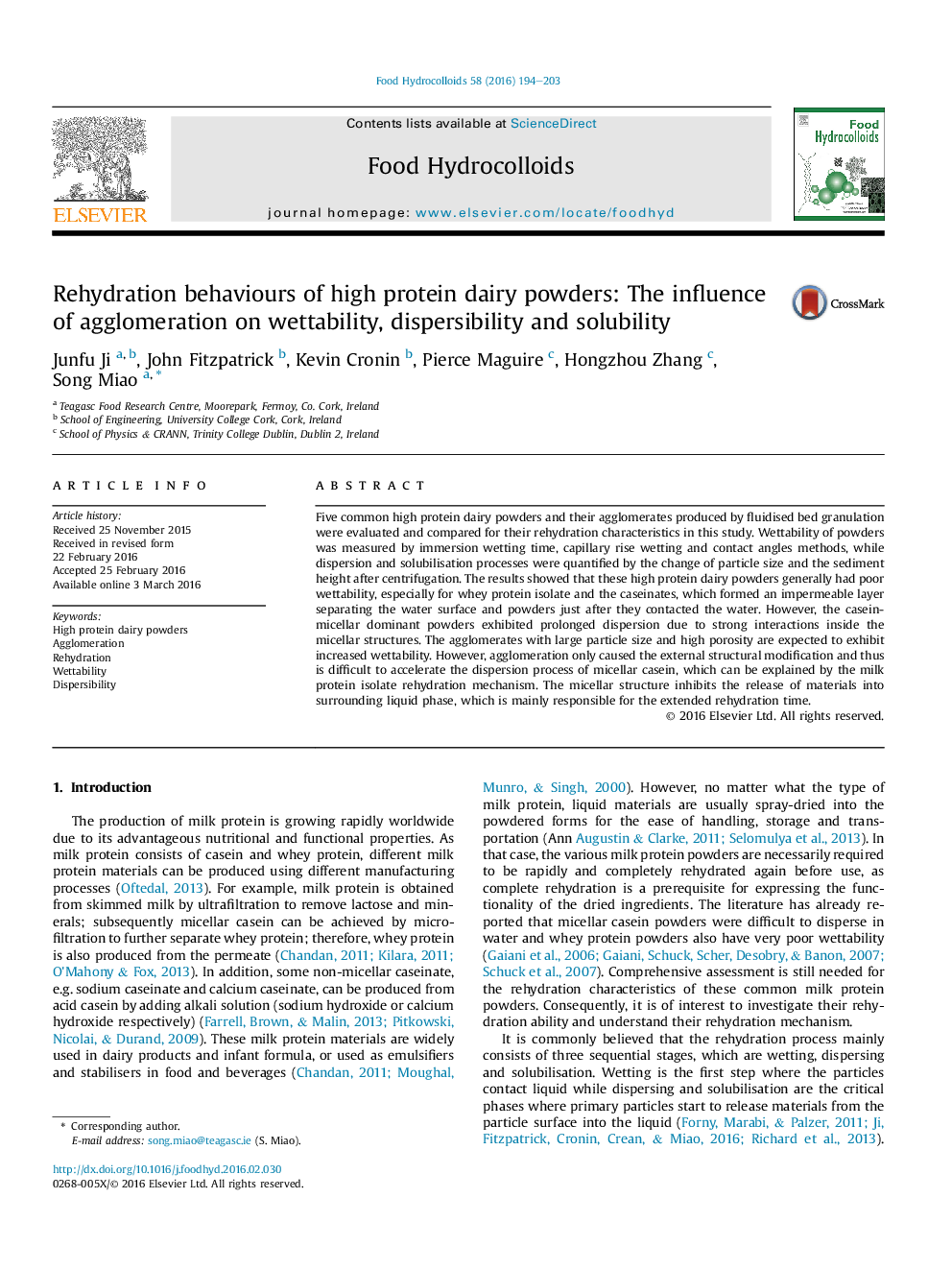| Article ID | Journal | Published Year | Pages | File Type |
|---|---|---|---|---|
| 603710 | Food Hydrocolloids | 2016 | 10 Pages |
•Rehydration properties of high protein powders and their agglomerates are compared.•Agglomeration improves the wettability of the powders with different degrees.•Agglomeration is difficult to change the solubilisation of casein-dominant powders.•The micelles structure inhibits the release of materials into surrounding water.
Five common high protein dairy powders and their agglomerates produced by fluidised bed granulation were evaluated and compared for their rehydration characteristics in this study. Wettability of powders was measured by immersion wetting time, capillary rise wetting and contact angles methods, while dispersion and solubilisation processes were quantified by the change of particle size and the sediment height after centrifugation. The results showed that these high protein dairy powders generally had poor wettability, especially for whey protein isolate and the caseinates, which formed an impermeable layer separating the water surface and powders just after they contacted the water. However, the casein-micellar dominant powders exhibited prolonged dispersion due to strong interactions inside the micellar structures. The agglomerates with large particle size and high porosity are expected to exhibit increased wettability. However, agglomeration only caused the external structural modification and thus is difficult to accelerate the dispersion process of micellar casein, which can be explained by the milk protein isolate rehydration mechanism. The micellar structure inhibits the release of materials into surrounding liquid phase, which is mainly responsible for the extended rehydration time.
Graphical abstractFigure optionsDownload full-size imageDownload as PowerPoint slide
